Nature Train Tour
June 17, 2015
 | After our inital garden tour, we returned to the entrance to catch our first guided tour. The tram took us by other previous rice fields which were covered with duckweed, a tiny plant that collectively just looked like green pond scum. But these ducks liked it. |
But these ducks shouldn't get too comfortable because the pond is full of alligators. Our guide said the big ones only came out at night when it was so hot, but we saw a few small ones like this one. | 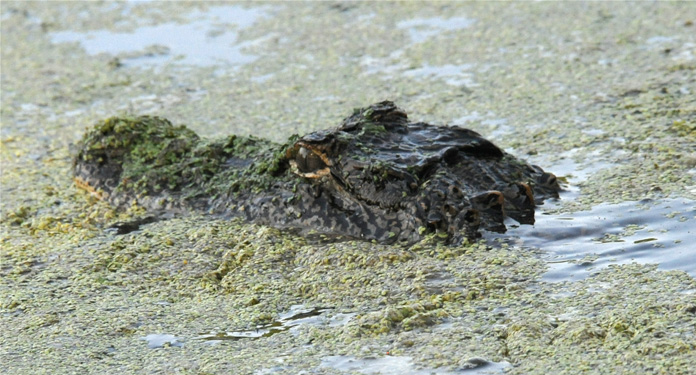 |
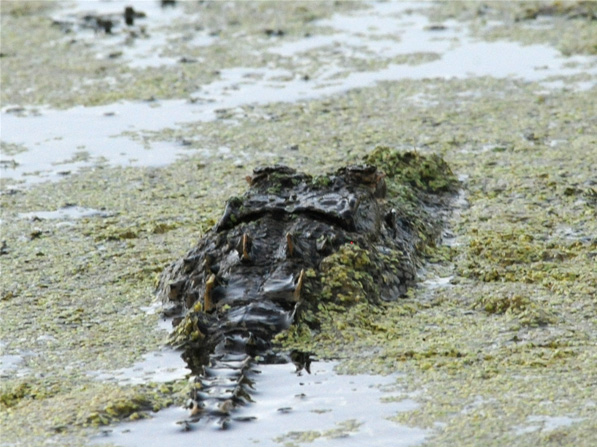 | In fact, we learned from our guide that these little platforms were made for the alligators to give them sunning platforms for the winter months. That aids them in surviving the winters. They said that you could see lots of large alligators on the platforms in April. We got quite a bit of alligator lore from our guides. There is a healthy population of about 200 adult alligators on the plantation. Several have reached 14ft in length and one about 16 feet. Particularly in warm weather, they feed mostly at night. We saw active trails where the big gators cross the walking paths at night from the ponds to the Ashley River where they feed on fish. |
The ducks seemed quite calm on this strange green surface. 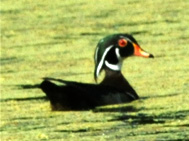 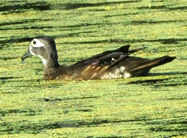 | 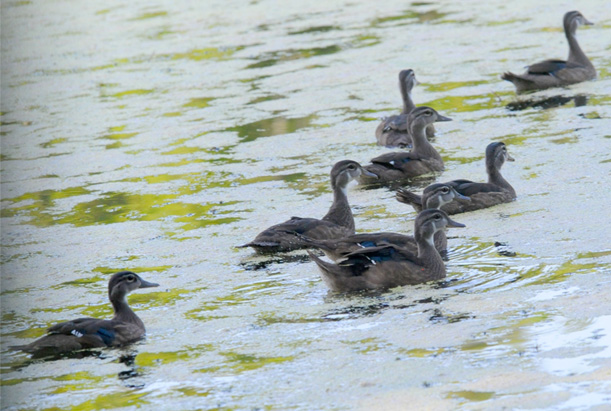 |
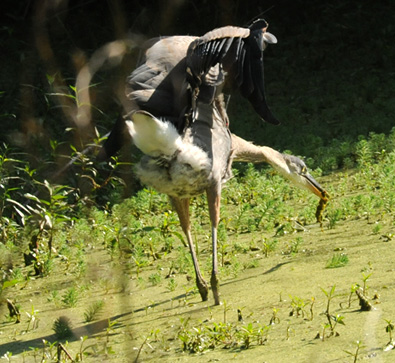 | 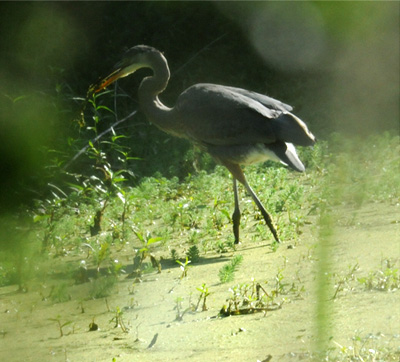 |
Our tour route was along what had been the dike between two rice fields circa 1700. These two great blue herons were hunting breakfast in the pond to our right, whereas the pictures above that were on the left in the bigger pond.
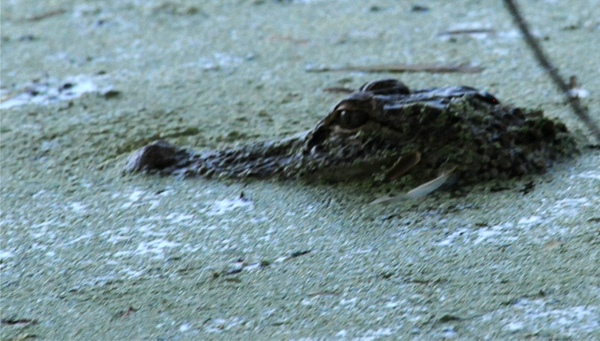 | Again looking to the left pond, we saw this small alligator. You had to be able to see their eyes to distinguish them from one of the many roots or limbs in the water. |

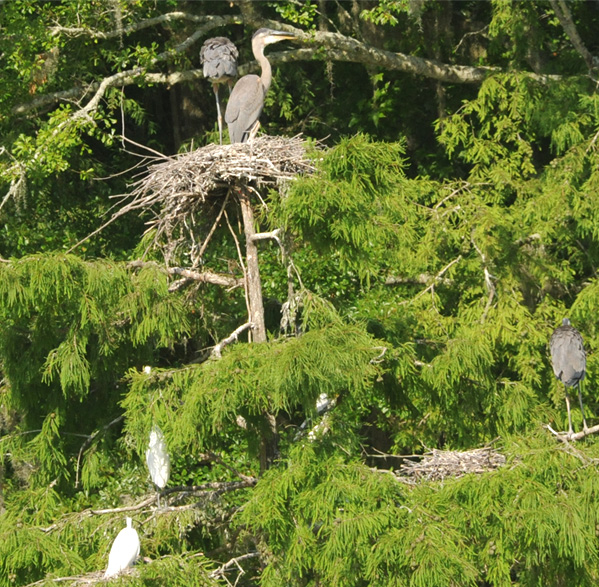 | Two small islands in the left pond served as a major nesting area or "rookery" for both the great blue heron and the white herons. The nests were just flat pallets of sticks on the limbs of the pine trees. |
We left the south swamp area and swung by the slave quarters. |  |
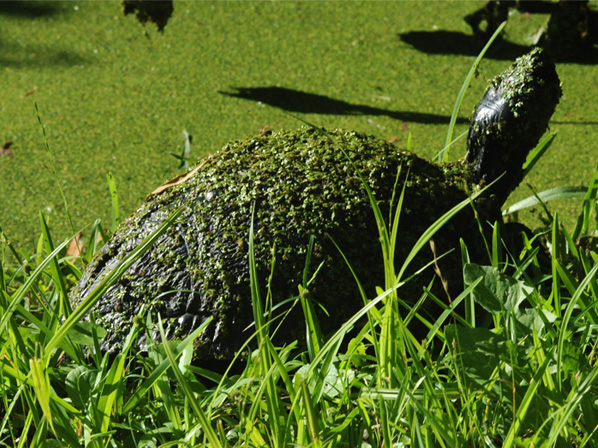 | We proceeded along one of the irrigation canals, covered by the green stuff, and encountered another notable resident of the area. He was called the yellow-bellied turtle, but we never saw the yellow belly. Our guide joked about the fact that the turtle seemed totally unaware that the gators considered him a delicacy until it was too late. We heard another guide refer to the turtles as gator-nachos, and they talked about the popping and cracking of the shell when a gator ate one. |
We passed some more open areas of the swamp. Wide expanses of the green duckweed and drapes of Spanish moss gave some beauty, so it was a swamp, but not a "dismal swamp". |  |
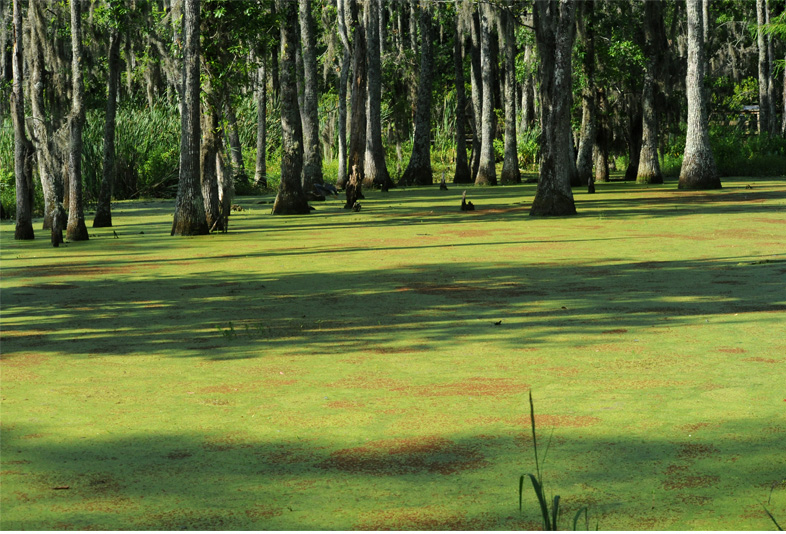
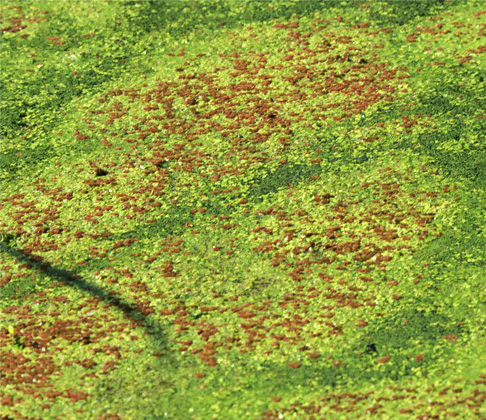 | In fact there were areas of the swamp that had great beauty, which surprised us. These great expanses of the the duckweed, which we just kept calling "green stuff" had some red areas. The guide explained that this was another species which was normally also green, but at certain times of the year took the red hue. |
In places the "green stuff" gave way to open water, and there the tall grass tended to take control. There were lots of ducks in the open water areas. 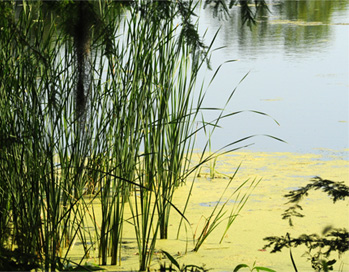 | 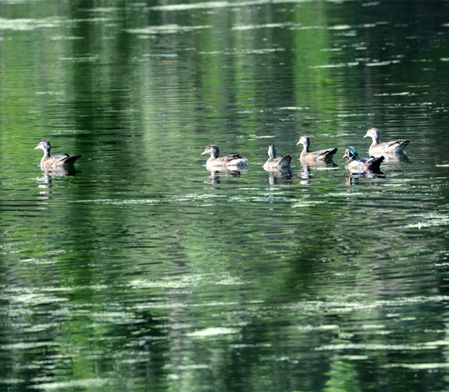 |

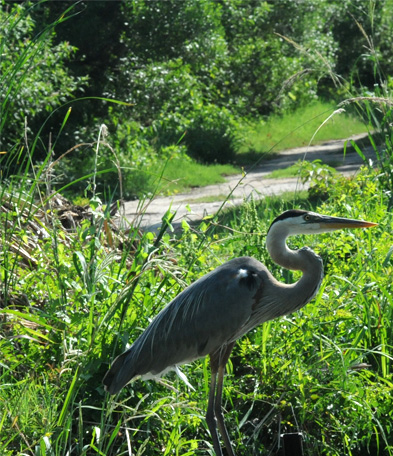 | Rounding a sharp bend, we encountered this dramatic great blue heron. 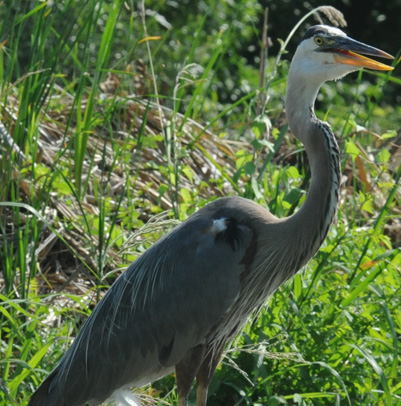 |
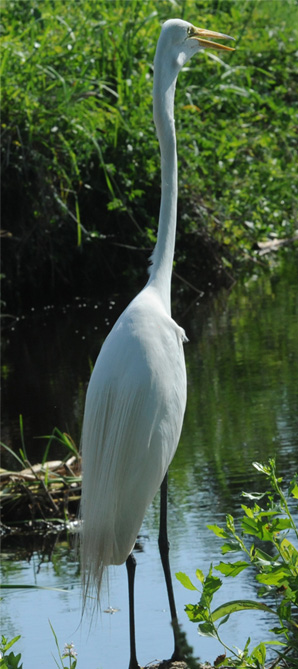 | Close to the great blue heron was a tall, slim great white heron. A little further along what had been one of the dikes for the rice fields we encountered this rabbit. 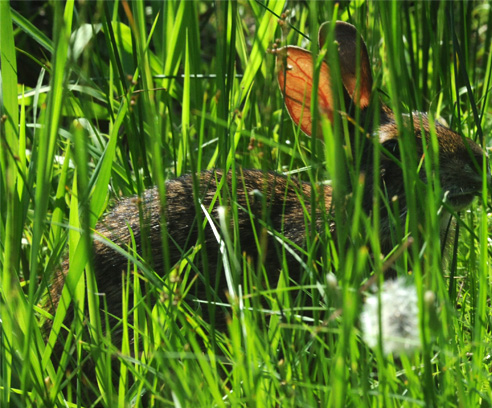  |

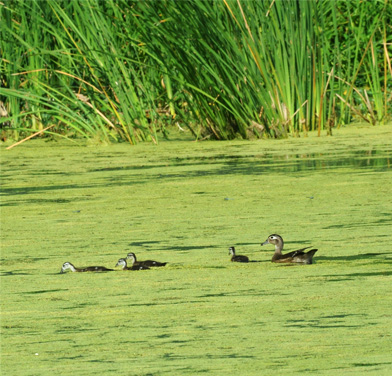 | This was my favorite view of the day. These ducklings swam out from the shore with Mom and we got to watch them a while out in the channel. 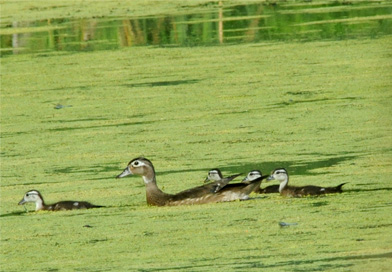 |
I hated to have to say goodbye to Mama and her four little ducklings! | 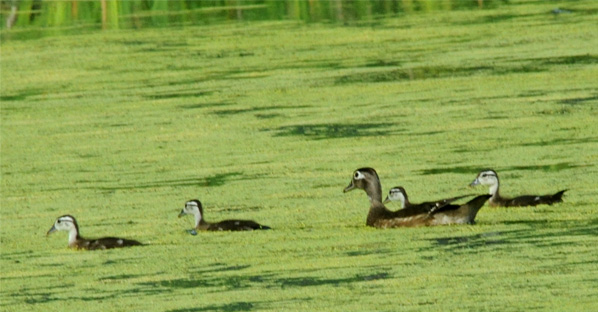 |
| To House and Slave Quarter tours |
2015